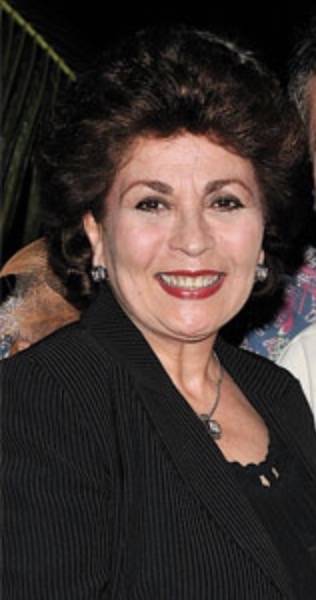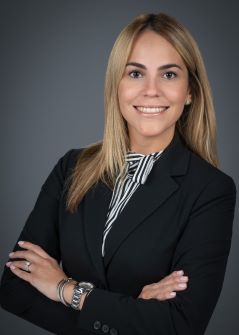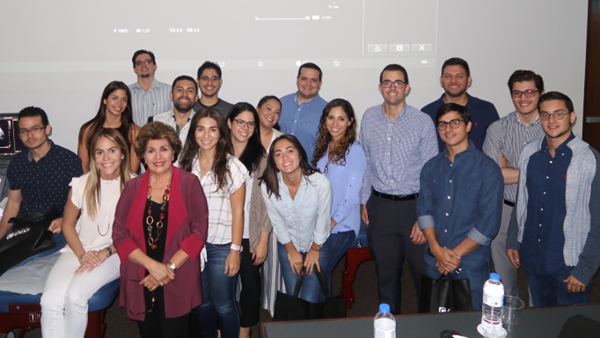Radiologists at the University of Puerto Rico School of Medicine give students a glimpse into the radiology profession to teach the power of imaging in all medical specialties.
- Frustrated by the lack of structured radiology training available during medical school, an aspiring radiologist began teaching an elective to expose future doctors to imaging.
- Interactive, hands-on activities made radiology courses fun for medical students, increasing enrollment to the point that students requested the class become mandatory.
- The virtual format made it practical for both teaching staff and students to attend class anywhere, even before the pandemic necessitated remote learning.
- Radiology training increased applications for the residency program while equipping future referring physicians with a basic knowledge of how to order and interpret imaging exams.
The role of radiologic imaging is central to diagnosing and managing a spectrum of conditions across every medical specialty. Unfortunately, if medical school curriculum doesn’t expose students to radiology early on, young doctors may enter the field without knowing which imaging studies to order, how to interpret common results or what value radiology adds to the continuum of care.
According to one study, the majority (63.7%) of first-year residents are frequently asked to preview radiologic studies before they’re read by radiologists — even though many of those residents (12.6%) never received any formal radiology training in medical school.1 Only a third of residents know which imaging exams to order, while 81% have never heard of the ACR Appropriateness Criteria® that provide evidence-based guidelines for making efficacious imaging decisions.2
When Wilma Rodríguez-Mojica, MD, FACR, attended the University of Puerto Rico (UPR) School of Medicine, she was intrigued by radiology, yet frustrated by the lack of organized radiology training. “Fourth-year medical students had the opportunity to shadow the diagnostic radiology department as a one-week elective, but the rotation was very informal and unstructured,” says Rodríguez, who graduated from the UPR School of Medicine in 1970. “We stood behind radiologists in the reading room and observed while they interpreted films. Some of them took time to explain the findings, while others were occupied with their work and did not get involved with teaching medical students.”
Few students signed up for the informal elective at UPR, which meant that many graduated from medical school without any knowledge of radiology. The lack of interest in imaging created vacancies in the school’s radiology residency program, leaving more than 10 positions unfilled. Without an influx of young radiologists entering the field, and with the future of the department in question, Rodríguez approached the chief radiologist and residency director at the time, Heriberto Pagán-Sáez, MD, DABR, with an idea to infuse radiology into the medical school curriculum.

Wilma Rodríguez-Mojica, MD, FACR, spearheaded the creation of formal radiology courses for fourth-year medical students at the University of Puerto Rico. |
“We should find a way to inspire medical students to learn about the field of radiology,” she told him. “We aren’t just training future radiologists, but all doctors. Learning about the indications and limitations of studies, how to order appropriate procedures and how to recognize pertinent findings — these are essential skills for becoming a good physician in any specialty.”
By teaching the clinical reasoning for radiologic imaging in all specialties, Rodríguez began developing an integrated radiology training program to make future doctors more informed about radiology’s role in every practice area.
Shaping Radiology Education
Several months before finishing the fourth year of her radiology residency at UPR in 1975, Rodríguez read about Lucy Frank Squire, MD, a radiologist and medical educator at the State University of New York (SUNY) who wrote a radiology textbook in 1964 called “Fundamentals of Roentgenology.”3 Subsequent editions of Squire’s book, named “Fundamentals of Radiology ,” soon became a standard resource for medical students everywhere.
During the 1970s, Squire gained international attention for conducting a series of postgraduate courses about radiology for medical students. Medical educators from around the world visited Squire to observe her innovative small-group teaching style, which she recorded and sold as a series of slides and tapes entitled “Seminars of Diagnostic Radiology.”
Seeing Squire’s training format as a model for UPR to emulate, Rodríguez asked her department chair to send her to New York so she could learn directly from Squire. With Pagán's support, the department approved Rodríguez’s request and sent her to spend one month under Squire’s tutelage, learning how to teach radiology to fourth-year medical students.
Rodríguez observed as Squire introduced students to radiology using her textbook and pre-recorded seminars. Then Squire divided classes into groups of five to 10 students and gave each group a set of chest or abdominal films accompanied by a small case history. After half an hour of small group discussion, the students reassembled to share their findings with the entire class.
Rodríguez worked closely with Squire. At the end of the one-month mentorship, Rodríguez returned to Puerto Rico and submitted a proposal to add a radiology elective to the UPR School of Medicine, modeled after Squire’s methods.
Convinced that radiology training was a necessary addition to the curriculum, the dean of the School of Medicine approved her proposal and provided the funds to purchase Squire’s “Seminars of Diagnostic Radiology” (in English) as the initial course materials. In 1976, as a junior attending radiologist, Rodríguez began teaching UPR’s first formal radiology elective for fourth-year medical students.
“We integrated a lot of radiology knowledge into two weeks,” Rodríguez says. “We not only discussed film findings, but the history of each patient and the indications and limitations of the studies to help students understand the role of radiology in managing patient care.”
Before showing students a set of films, for example, Rodríguez shared the medical order for the exam to show the importance of including relevant details from the patient’s case history to focus the radiologist’s evaluation. By taking this big-picture approach, she emphasized the collaborative role of radiology early on, instead of feeding the misconception that imaging existed only in the reading room without intersecting with other specialties.
Expanding the Curriculum
Squire’s initial seminars covered chest and abdominal films, gastrointestinal and genitourinary studies, and bone lesions. As new imaging modalities entered the field, and as medical students inquired about other types of imaging to inform broader diagnostic decisions, the course naturally expanded.
Gradually, Rodríguez added other radiology topics to the curriculum — pulling in colleagues to cover a wider range of imaging subspecialties. The support of department leaders was essential in expanding the course, as Pagán granted radiologists time away from service to teach.
“For many years, I was the only proctor teaching the course. But eventually other faculty members and subspecialists were happy to participate,” Rodríguez says. “I began recruiting other faculty members to give one-hour lectures to the students, and we started including images from other modalities.”
A classroom was created inside the radiology department at the Puerto Rico Medical Center, near the medical school, which gave the students hands-on access to imaging equipment. When she added a sonography section to the course in the late 1980s, for example, Rodríguez wheeled an ultrasound machine into the classroom and asked for volunteers to receive sonograms to demonstrate the technology in action.
“The students were excited to lie down on the stretcher as volunteers, and the rest of the class was amazed to see the images,” Rodríguez says. “Those experiences made the course more interesting and interactive.”
Mandating Radiology Training
The interactive learning format that Rodríguez modeled after Squire’s methods quickly gained attention at UPR.
“It was a very popular course, and nearly all the fourth-year medical students signed up for it,” Rodríguez says. “Before that, many students didn’t even know what role radiologists played as members of the care team; but after taking the course, many of them expressed interest in becoming radiologists.”
Rather than focusing solely on recruiting radiologists, Rodríguez tailored the program to be applicable to medical students who planned to pursue other fields as well. Her enthusiasm for imaging made the course approachable for all students, regardless of their career plans.
As more faculty contributed to the radiology elective, the program’s popularity among students spread. “It became so popular as an elective that the students made a proposal to the curriculum committee that it should be offered as a required course during the third year of medical school,” Rodríguez says. “They realized that radiology was important for all students, and that every physician should know how to order exams and recognize basic findings — not just the ones pursuing radiology.”
The UPR School of Medicine agreed and made radiology training mandatory for third-year medical students starting in 1996. Initially offered three times a year as a two-week rotation, the required radiology course focused on lectures, dropping Squire’s small-group activity due to enrollment numbers.
Learning by Teaching
After the radiology course became a requirement for third-year medical students, some members of the anatomy faculty approached Rodríguez and asked her to speak to their classes, exposing students to imaging during the first year of medical school. They realized that X-rays, CT scans and MRIs were the perfect tools to provide a glimpse inside the human body and illustrate anatomy beyond the textbook.
Additional requests to expand the radiology curriculum into internal medicine and surgery modules stretched Rodríguez’s availability. To manage her growing workload, she recruited other attending radiologists and also began pulling radiology residents into teaching roles.
“It was a necessity because I had to work as a radiologist also,” she says. “I recruited slowly, because not everyone has the patience and ability to teach. Giving conferences to residents was an opportunity to see who speaks fluently, who understands the images, and who can explain their findings easily to others. Those are the ones we recruited.”
To free up time in Rodríguez’s schedule, radiology residents began giving the hour-long anatomy lecture to first-year medical students, using the prepared teaching materials. The course began with an introductory lecture covering different imaging modalities and offering examples to show the normal appearance of various body segments.
 Andrea N. Saldaña-Méndez, MD, is a fourth-year radiology resident at UPR who decided to specialize in imaging after taking the required course to be able to teach it to first-year medical students. |
“The first-year course is usually assigned to the more senior residents,” says Andrea N. Saldaña-Méndez, MD, a fourth-year radiology resident at UPR who decided to specialize in imaging after taking the required course. “As a resident, it’s exciting because you get to go back to the classroom where you started taking your classes and teach a topic that you now use every day. It’s so important to explain what radiologists do on a daily basis and how valuable they are because, for many medical students, it’s their introduction to radiology.”
Over time, lower-level radiology residents began offering lectures in the required course and proctoring small group discussions for third-year medical students. “When you try to teach radiology to medical students, you have to explain it in very simple words,” Saldaña says. “You have to really understand a concept before you can teach it to someone else, so the residents and the students both learn a lot.”
Digitizing the Course
During the 2009–10 school year, the School of Medicine modified its third-year curriculum to allot more time for clinical rotations. Specifically, the internal medicine clerkship required additional time, impinging on the two-week slots previously devoted to radiology. At that point, the radiology course, called Introduction to Diagnostic Radiology and Nuclear Medicine, switched to a yearlong online format, offering a series of virtual lectures and PowerPoint presentations that were integrated into each clerkship rotation.
The internal medicine clerkship, for example, introduces radiology images and concepts to illustrate chest and abdominal pathologies. Similarly, the obstetrics and gynecology rotation focuses on ultrasound imaging, and the pediatrics clerkship covers conditions such as necrotizing enterocolitis, hyaline membrane disease, intussusception and other conditions that commonly affect babies and children. The surgery rotation focuses more on CT imaging, while the psychiatry rotation relies on CT, MRI and nuclear medicine studies.
Third-year medical students rotate through five clinical clerkships during the academic year, with radiology lectures scheduled throughout each rotation. At the end of each clerkship, students take an exam with 15 questions devoted to radiology’s role in that specialty, followed by a final year-end exam.
By the 2012–13 academic year, Vilma Olivieri-Beauchamp, MD, DABR, who had been teaching the genitourinary radiology lectures for years, took over as course director. She began updating the PowerPoint slides used in the online course — adding delineations to highlight findings in the films and recording explanations on video. Rodríguez contributed the ultrasound lectures in the OB-GYN rotation. Other attending radiologists, nuclear medicine specialists and physicists provided vignettes, writings, lectures, videos and recordings in their respective specialties.
 First-year medical students take part in the ultrasound workshop developed by Wilma Rodríguez-Mojica, MD, FACR, to complement the OB-GYN rotation. |
Although prerecorded lectures made teaching convenient, medical students missed the interactive aspect of the original course. Responding to annual feedback from the students requesting more hands-on opportunities to interpret images, Olivieri added live lectures and other didactic activities, such as the revival of Squire’s original small group activity during the internal medicine rotation.
Students can access the course material through Blackboard, the UPR School of Medicine’s online course platform, and they attend classes remotely through Zoom. Students log in simultaneously to attend live virtual lectures and didactics, aided by PowerPoint presentations that contain annotated films and video explanations. Radiology residents regularly present course material, while Olivieri supervises and intervenes, as necessary, to clarify concepts during class.
“Radiologists speak a different language, and when you’re doing imaging every day, you lose sight of the fact that students may not know what language you’re speaking,” Olivieri says. “So, if a resident lecturer refers to a chest PA film and doesn’t explain what a posteroanterior view is or why we use it, that’s when I’ll pitch in and translate to make sure the students understand the nomenclature.”
A few exams have returned to the physical classroom since the pandemic, and although students regularly request the opportunity to shadow radiologists at work, it’s still not logistically possible, given the space constraints and ongoing COVID protocols. To get that opportunity, fourth-year medical students can take a two- or four-week elective that lets them observe radiologists in action beyond the classroom.
“For now, we have decided to maintain the virtual lectures,” Olivieri says, noting that the radiology courses consistently score high in student evaluations, with more than 95% rating the course material and teaching staff (including residents) as good to excellent. “Giving lectures online is very practical, since you can recruit staff and residents wherever they are to teach students wherever they may be.”
Finding Value in Radiology
Of the four medical schools in Puerto Rico, Saldaña says the UPR School of Medicine is the only one with a required radiology curriculum for medical students — although one of the other schools is incorporating radiology into its medical curriculum.
“I’m very proud of what we developed,” Rodríguez says. “Our program has influenced many of the medical students from Puerto Rico, some of whom have become radiologists. Physicians from other specialties occasionally come up to me at conventions and tell me that my class taught them the basic principles of radiology.”
On average, between six and 10 students in the School of Medicine apply for UPR’s radiology residency every year, along with students from other medical schools. With four residents selected each postgraduate year, the program maintains peak capacity — equipping future radiologists with imaging skills along with teaching experience to prepare them for imaging careers.
While the curriculum has attracted more students to the specialty, “our aim is not necessarily to recruit more physicians to radiology,” Olivieri says. Rousing interest in imaging is just a beneficial side effect of empowering all medical students with the radiologic knowledge they’ll need to treat patients optimally.
“In this world of evidence-based medicine, radiology offers a means of identifying what ails each patient,” she says. “The modern physician needs to know how to request the appropriate studies to understand each patient’s illness more fully and learn how to appropriately evaluate each one. One thing we stress during the course is that any physician may have a radiologic study in their hands, and if by any chance a radiologist is not available to interpret the image, each physician must at least know the basics to better serve their patients and to minimize diagnostic errors.”
End Notes
1. Saha A, Roland RA, Hartman MS, Daffner RH. Radiology medical student education: an outcome-based survey of PGY-1 residents. Acad Radiol. 2013 Mar;20(3):284-9. doi: 10.1016/j.acra.2012.10.006.
2. ACR Appropriateness Criteria. bit.ly/ACR-Appropriateness-Criteria.
3. Becker JA. Lucy Frank Squire, MD, In Memoriam. doi.org/10.1148/radiology.208.1.273-b.
Twitter Handles and Hashtags:
Now It's Your Turn
Follow these next steps to begin implementing this initiative at your institution. Tell us how you did on Twitter with the hashtag #Imaging3 or email us at imaging3@acr.org:
- Start small by incorporating radiology into the medical school curriculum through a fourth-year elective or a first-year anatomy course.
- Ask medical students what’s missing from the curriculum by requesting feedback and ideas after the completion of each course.
- Provide hands-on opportunities for medical students to interpret images and experience scanning equipment in action.
Author
Brooke Bilyj, freelance writer
Join the Discussion

#Imaging3 on Twitter
Call for Case Studies
